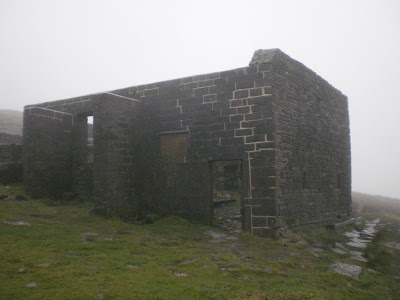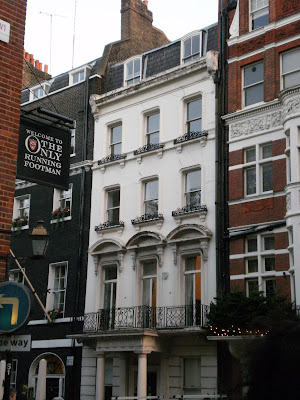Ok, so apparently, people have actually noticed that I have been totally slack with these posts. Admittedly, when I say people, I mean my Mum, but hell, an audience is an audience! Its just that time seems to fly by when your stressing about how much work you have to do in such a short period of time! But a little bit of stress is a great motivator, and now I have a clear idea of topics for my dissertation, which is awesome!
Enough about work! More about London adventures! The other weekend, I went to Hampton Court for the day, it was AMAZING. So much stuff to see and so little time! There are three main parts to the palace: the Tudor part, the part for William and Mary, and the Georgian part. So, because there is so much to say and I took so many photos, I am going to break down the Hampton Court excitement into three posts.
First, and probably most importantly, the Tudors.
 |
| Check out the fountain - apparently on special occasions, it would run with wine instead of water! |
The palace was actually built (in this amazing red brick) in 1514 by
Cardinal Wolsey,
Henry the eight's closest advisor and the most powerful man in England. The whole place was designed to impress the numerous foreign dignitaries that Cardinal Wolsey entertained - in the main courtyard (in the photo above), all the upper rooms were specially designed as guest accommodation and all the rooms had their own toilets which drained out under the courtyard and into the Thames nearby. Not having to share a toilet was beyond impressive at the time.
However Wolsey made a fatal error in making the palace so amazing, Henry fell in love with it, and Wolsey had to give the palace to Henry as a "gift". Poor old Wolsey. Especially as he later fell out of favour with Henry because he couldn't organise Henry's divorce from Catherine of Aragon, and died in the Tower of London. There are rumours he committed suicide, but he was probably just sick.
 |
| There's ole Wolsey right at the top, above Henry. Interesting! |
So, on to Henry, probably the most famous, and infamous, king in English history. He's pretty much remembered as a fat, gouty old man with a gammy leg. But when he first game to power, he was young, handsome, energetic and charismatic. He hunted and jousted, and was intelligent and funny. He was
Johnathan Rhys Meyers. It was during his youth that Henry ruled with the help of Wolsey and his then wife,
Catherine of Aragon. Even though Henry got fat and gouty later on, he never lost his charisma - he was the sort of person that people were drawn to and were excited to be in his presence. The fact that he was the King of England probably helped with that, but he was undoubtedly an attractively personality.
 |
| Look at him there, luring you in with his eyes. |
So Henry got rid of Catherine, and replaced her with
Anne Boleyn, then Jane Seymour, the
Anne of Cleaves, then
Catherine Howard and then
Katherine Parr. Throughout this time, Hampton Court was still being added to, and different rooms have little pieces of each queen's iconography hidden everywhere. All trace of Anne Boleyn was supposed to have been removed, but some were missed. You can't really see it in the photo below, but on the far right hand side of the balcony, there is an A and H intertwined. But also, check out the ceiling! This is the banqueting hall, and you really have to see it to get how amazing it really is (especially as my photography skills aren't exactly the greatest).
My friend Samantha taught me a little poem to help remember the fate of all of Henry's wives: "Divorced, beheaded, died; divorced, beheaded, survived"! Out of all those wives, Henry got only three children: Mary, Elizabeth and Edward.
 |
| Here they all are: Edward standing on the left of Henry and Elizabeth on the right, with Mary on the far right. The women on the far left is probably Jane Seymour, Henry's favourite wife, even though she was dead by this time. |
Although the youngest,
Edward was the first on the throne, being the only, and much desired, son. Although he looked a lot like his father, he didn't have his father's strength, either of personality or physically. Edward was the son of
Jane Seymour, who was Henry's most treasured wife because she gave him a son, and probably because she wasn't as aggravating as the previous two. After Jane died giving birth to Edward, Henry kept a lock of her hair in his bible until he died, and was buried next to her in St George's Chapel.
Edward only ruled England very briefly, and even then he ruled under the advice of a council because he was too young to rule alone. He died at the age of 15, probably of tuberculosis or pneumonia. In his will, he gave his throne to his cousin the Lady Jane Grey, ignoring his father's will. However, Mary was quick to depose Jane and take her place.
Mary, the eldest, was the daughter of Catherine of Aragon, and like her mother, a devout Catholic. She wasn't a particularly nice person - a lot of people where burned as heretics during her reign as queen. Her hardline approach was probably due to her relationship with her parents. Initially, both her parents were devoted to Mary and took a great interest in her education, particularly her mother. But when Catherine refused to divorce Henry, as punishment, Henry sent Mary away from her mother(using a child to inflict pain on an ex-wife! And they say history never repeats), and consequently, Mary greatly resented her father.
Mary married
Philip of Spain, who was a bit of a weedy bloke and not much liked by the English public, but apparently they had quite a happy marriage. Mary became queen in 1553, after a little confusion with the
Lady Jane Grey's appointment as a puppet queen. She ruled until 1558, aggressively pushing Catholicism and putting down Protestantism, until she died, probably, of ovarian cancer. Despite her negative legacy (she was commonly known as Bloody Mary, especially in Protestant Circles), she was a trailblazer, being the first woman to successfully claim the throne of England.
 |
| This is the clock gateway in Clock Court. The clock is amazing - it tells the time, the month, and the relevant sign of the zodiac. Also, check out the chimneys - Hampton Court is famous for these. |
After Mary died,
Elizabeth took the throne. Elizabeth was the daughter of the infamous Anne Boleyn and Henry, and seemed to unite some of the best qualities of both her parents - she was intelligent, strong, independent, and charismatic - and was probably the most like her father out of all her siblings. She was one of England's longest rulers (after Queen Victoria) and also one of the best. Under her rule, the British Empire was founded, which would eventually make England the most powerful nation in the world. She never married, believing that she had the ability to run the country alone. Books have been written about her, movies have been made about her (
Cate Blanchet is probably my favourite), all in all, she was a pretty amazing woman.
 |
| The entrance to Hampton Court. |
Ok, enough about people, let's get on to the important stuff - food!
Henry's court was made up of over 600 people, and they toured around the country, visiting all of Henry's palaces. This was partly for political reasons but also because the court sucked the surrounding countryside dry. Hampton Court has MASSIVE kitchens, designed to store and cook all the food that such a huge court required. The court ate a lot of meat, because meat was expensive and to be able to serve a lot of it showed how wealthy you were. This was also why all of the workers in Henry's kitchens were men - men were more expensive to hire. If you go to
Hampton Court on the right days, there are experiemental chefs in the kitchens, cooking exactly the same way as they did in Tudor times.
Here's a wee photo, just to give you an idea about the scale of these kitchens - this is only one of the open fires, and its big enough to stand up in:
On that note, its time for dinner - more on Hampton Court soon!






































